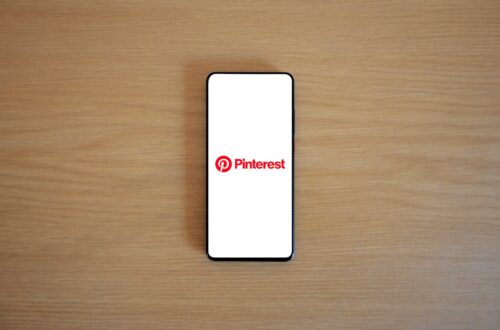
How to Create a Digital Product That Sells: A Beginner’s Guide
In today’s digital age, creating and selling digital products has become one of the most lucrative ways to generate income online. Whether you’re a seasoned entrepreneur or just starting, selling digital products offers low overhead costs, no inventory to manage, and the potential for significant passive income. But how do you create a digital product that people will actually buy?
In this beginner’s guide, we’ll walk you through the process of creating a digital product that sells, from concept to launch. Plus, we’ll sprinkle in some key tools and platforms that can help you along the way, many of which offer affiliate programs that can help you earn even more.
Step 1: Identify Your Niche and Audience
Before you dive into creating a digital product, it’s crucial to identify your niche and target audience. Who are you creating this product for? What problems can you solve for them? By focusing on a specific group of people and addressing their pain points, your product will be much more likely to succeed.
Tip: Start by researching your audience’s needs through online communities, social media groups, or even surveys. Understand what challenges they face, and brainstorm how you can provide a solution with a digital product.
Step 2: Choose the Right Type of Digital Product
Digital products come in many forms, and it’s essential to choose the one that best suits your expertise and your audience’s needs. Some popular types of digital products include:
- E-books: If you’re knowledgeable in a specific field, writing an e-book can help educate your audience while positioning you as an authority.
- Online Courses: If you have skills to teach, creating an online course can provide value to your audience while generating recurring income.
- Templates and Tools: From website templates to productivity tools, if you can design a useful tool, people will be willing to pay for it.
- Printables: From planners to budget worksheets, printables are a popular option for creating low-cost products that people can download instantly.
- Membership Sites: Provide exclusive content, resources, or tools through a subscription-based model, giving you a consistent monthly income.
- Audio and Video Content: Whether it’s meditation tracks, podcasts, or video tutorials, creating media content is another avenue for digital products.
Step 3: Create Your Product with High-Quality Tools
Once you’ve decided on the type of product you want to create, the next step is execution. Depending on the product, you’ll need specific tools to ensure it’s high quality and professional. Here are some great tools to help you create your digital product:
- Canva: A fantastic tool for creating visually appealing e-books, templates, and printables. You don’t need to be a graphic designer to use Canva, and it offers templates to get you started quickly.
- Teachable: If you’re looking to create an online course, Teachable makes it easy to build and sell courses with its user-friendly interface.
- Audacity: For those creating audio content, like podcasts or meditation tracks, Audacity is a free and powerful audio editing software.
- Loom: Perfect for recording video tutorials, screen captures, and presentations, Loom allows you to produce high-quality video content without complicated editing software.
Each of these tools also has the potential to be part of affiliate programs that offer rewards for referrals, giving you another stream of income.
Step 4: Validate Your Idea
Before investing too much time into creating your product, it’s wise to validate your idea. This will save you from creating something that won’t sell. There are a few ways to test your product concept:
- Pre-sell your product: Announce your product to your audience and offer pre-orders at a discounted rate. If people are willing to pay before it’s even available, you know you have a winner.
- Survey your audience: Use social media or email to ask your audience what they want in a product and if they’d be interested in buying your idea.
- Beta testing: Offer your product to a small group of people for free or at a reduced price in exchange for feedback. This can help you refine your product before the full launch.
Step 5: Set the Right Price
Pricing your digital product can be tricky. You don’t want to price too low and undervalue your work, but you also don’t want to price too high and scare away potential buyers. Here are a few tips to guide you:
- Research your competition: Look at similar products on the market and see what they’re priced at.
- Consider value over cost: People are willing to pay more for a product if they believe it will solve a problem or improve their life in a significant way.
- Test different price points: If you’re unsure, you can experiment with different price points, especially during the early stages of your launch.
Some platforms, like Gumroad, make it easy to sell digital products and even allow for tiered pricing options, which can help you attract a wider range of buyers.
Step 6: Build a Sales Page That Converts
Your digital product won’t sell itself—this is where your sales page comes in. A well-designed, persuasive sales page is crucial to converting visitors into buyers. Here are some key elements to include:
- Compelling Headline: Grab attention with a headline that addresses a key problem your product solves.
- Benefits Over Features: Focus on how your product will improve the buyer’s life, rather than just listing features.
- Social Proof: Include testimonials or case studies if you have them.
- Clear Call to Action: Make it easy for visitors to purchase by including clear, bold buttons like “Buy Now” or “Get Started.”
- Money-back Guarantee: Offering a risk-free purchase with a money-back guarantee can boost buyer confidence.
Kajabi is a popular platform for creating sales pages and managing the entire digital product sales process.
Step 7: Market Your Digital Product
Once your product is created and your sales page is live, it’s time to promote your digital product. The more people who see your offer, the more likely you are to make sales. Some effective marketing strategies include:
- Email Marketing: Build an email list and send targeted campaigns to promote your product launch.
- Social Media: Leverage platforms like Instagram, Facebook, and LinkedIn to promote your product and share valuable content.
- Content Marketing: Write blog posts, create YouTube videos, or start a podcast that ties into your product and promotes it subtly.
- Affiliate Marketing: Partner with influencers or bloggers who can promote your product in exchange for a commission.
Platforms like ConvertKit make email marketing simple, offering automation and list-building tools that help you grow your audience and sell more products.
Step 8: Launch and Continue Optimizing
After all your hard work, it’s time to launch your digital product! However, the work doesn’t stop there. Continue to monitor your sales and customer feedback, making improvements as needed. Some additional strategies to boost sales post-launch include:
- Limited-time offers: Encourage urgency by offering a time-sensitive discount or bonus.
- Upselling: Offer complementary products or services to buyers after they make a purchase.
- Collect testimonials: As customers use your product, ask them for feedback and use positive reviews to build credibility.
Conclusion
Creating a digital product that sells is not only achievable but can also be incredibly rewarding. By following these steps—from identifying your niche and audience to marketing and optimizing your product—you can create a valuable resource that generates passive income and helps your audience solve real problems.
Remember, the key to success is not just in creating a great product but also in understanding your audience’s needs, validating your idea, and continuously refining your offering.




